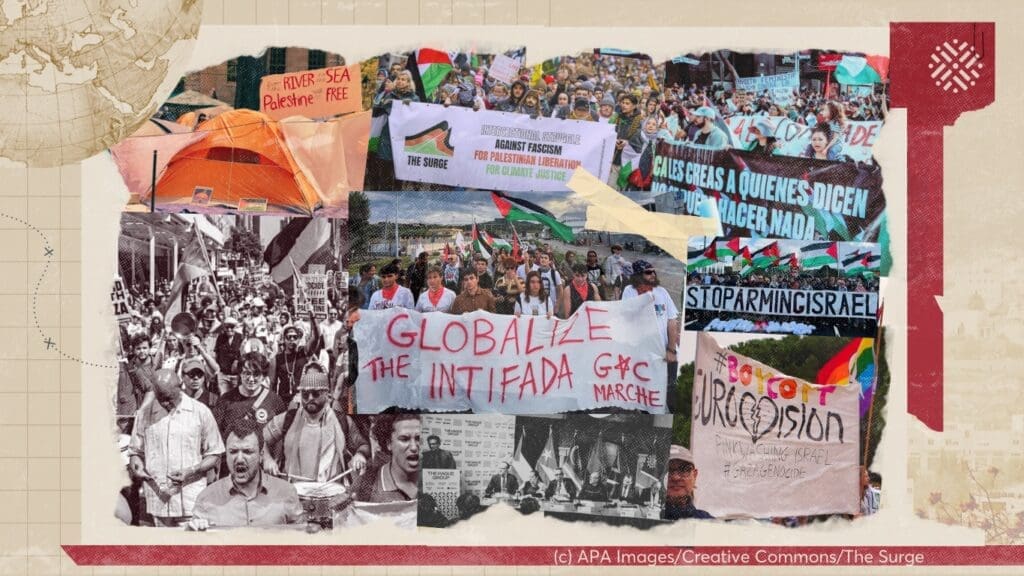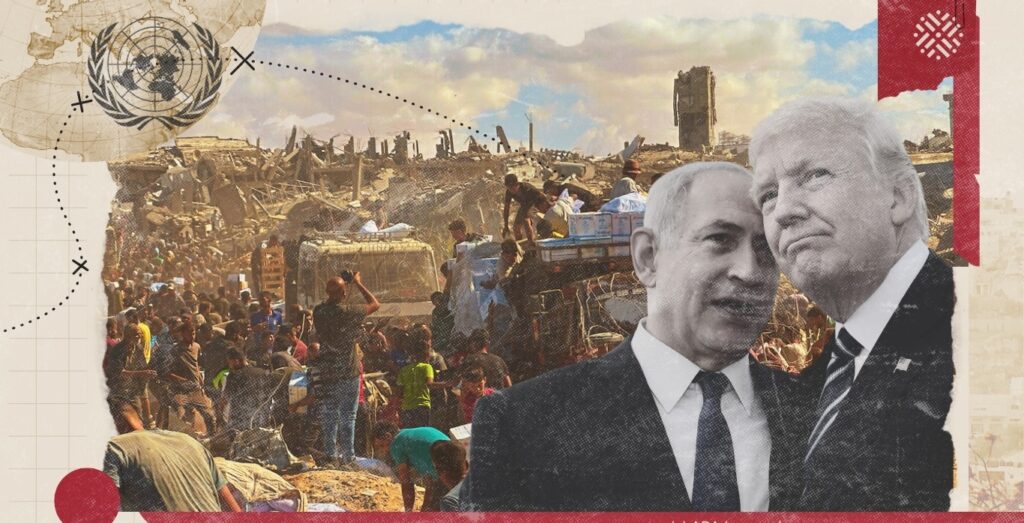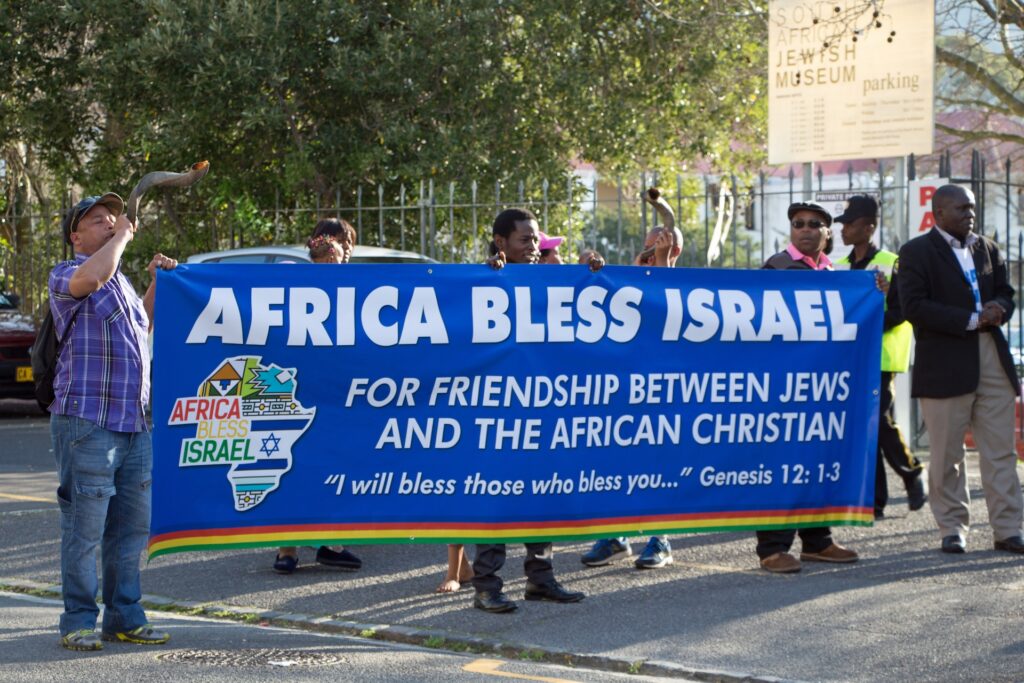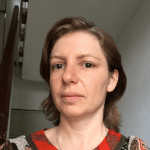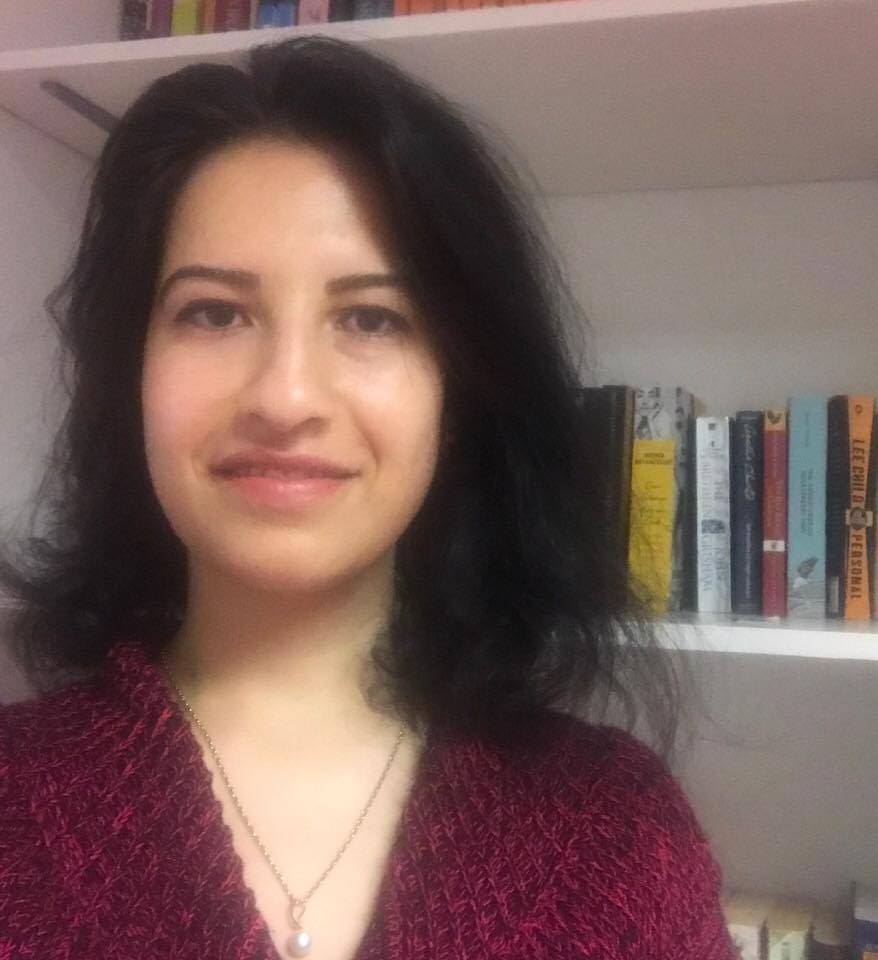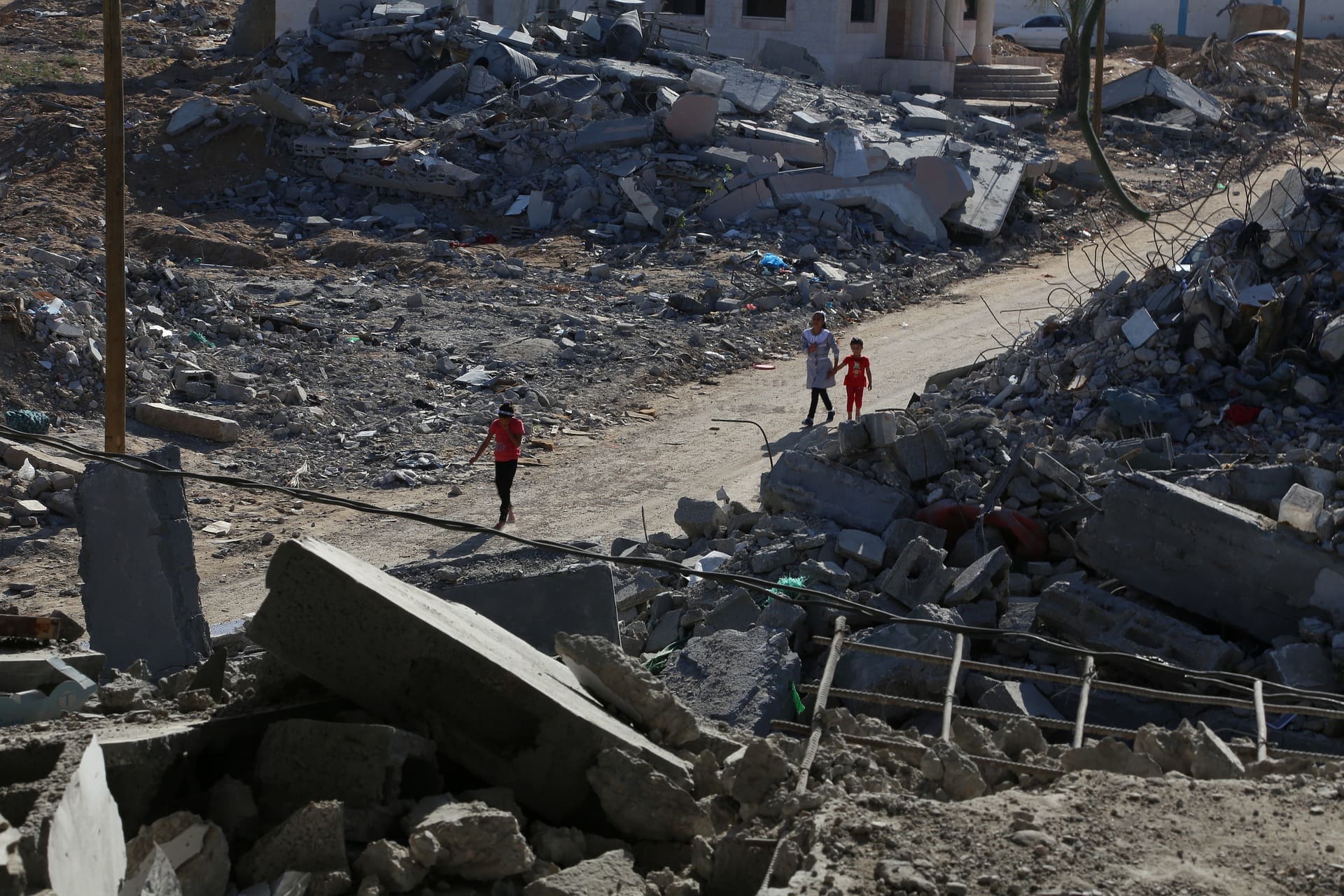
In the state of siege,
Time becomes space transfixed in its eternity,
In the state of siege,
Space becomes time that has missed its yesterday and its tomorrow.
Mahmoud Darwish, Under Siege
Overview
How does one communicate what life is like under siege? Much has been written to describe the besieged Gaza Strip yet Al-Shabaka Policy Member Ayah Bashir and Guest Author Esther Rappaport bring new insights and perspectives in this Roundtable. Ayah Bashir lives under the siege of Gaza at the present time; Esther Rappaport’s family lived under the siege of Leningrad during World War II. Ayah and Esther came to know each other through social media during the Summer 2014 attack on Gaza and first thought of writing this piece during this war. In their reflections and analysis of the two sieges they ably communicate the stark reality of life under siege. The reflections of each of the two authors are given in their own voice. They also provide some additional factual information and background, and this part of their discussion, conversation, and argument is presented in the voice of a “narrator”.
Ayah Bashir and Esther Rappaport: We are in agreement that this text is not a normalization project. It is based on our mutual belief and political message that the siege as well as the illegal Israeli occupation of 1967 must come to an end and that Palestinian refugees must be able to return to their towns and villages. We strive to achieve Palestinians’ rights as enshrined in international law and we aim for equal rights for both Palestinians and Israelis.
What Is a Siege? Leningrad and Gaza
Esther Rappaport: My mother’s birth city, Leningrad, was under German siege for 2.5 years during World War II. Early in the siege, a fire broke out in the emergency food supply storage facilities, leaving the city essentially without food. Throughout the siege, the Soviet government tried to smuggle food supplies into the city via Lake Ladoga and by airplanes but because of unceasing German bombardment and shelling very few of those supplies were safely delivered. The population was subjected to extreme starvation, which killed around one million people. Some resorted to eating pets and dead bodies, others scraped wallpaper off the walls to consume the potato starch glue that had some nutrients.
Midway through the siege, a narrow pathway was opened up, making it possible to evacuate the most vulnerable population groups out of the city. This pathway, leading through the frozen Lake Ladoga, became known as The Road of Life but was also often referred to as The Road of Death, because it was so dangerous. My grandfather, who was then about 40, died of a minor illness in besieged Leningrad, as a result of the lack of food and medical supplies, and was buried in a mass grave. After his death, my mother, grandmother and uncles were evacuated from the city via the Road of Life/Death with the kindergarten that my grandmother worked for.
Ayah Bashir: Few outsiders realize what the siege is like. The Gaza Strip, the place where I have lived all my life, has been under a brutal ongoing siege since 2007. After Hamas seized control of Gaza in 2006, Israel, aided by Egypt, sealed off the passages, i.e. the six crossings with Israel and the Rafah crossing with Egypt, and tightly controlled the exit and entry of people and all goods including humanitarian and medical supplies.
Our deprivation of our basic rights under the siege has not only been physical but also mental and psychological. For example, when I was in high school in 2006, I had big dreams of academic life at the university. I did my best to get a very high Grade Point Average (GPA) so that I could fulfill my dream of studying at Birzeit University in the West Bank. My GPA was 98.6%. However, like many other students I was unable to leave Gaza and had to accept this fact. Doing my BA studies in Gaza, I suffered from the shortage of both electricity and books. The university’s library was limited to the literary writings of Charles Dickens and Shakespeare and held no contemporary literature or texts on women’s studies, the field in which I am very interested. Books are among the many thousands of items whose entrance into Gaza is severely restricted. I finished my BA in English Literature without being able to buy a single novel or book. We constantly depended on photocopying and online resources. Due to Israel’s siege and occupation the educational system in Gaza takes us back to the Middle Ages.
Narrator: Under international humanitarian law (IHL), a siege is not prohibited per se in armed conflicts. However, combatants must respect other provisions of IHL as well as of international human rights law, such as not starving the enemy civilian population and not imposing collective punishment. The siege of Gaza has been widely defined as collective punishment, which is prohibited under Article 50 of the Hague Regulations of 1907 and Article 33 of the fourth Geneva Convention). The ICRC confirmed in 2010 that the closure constitutes collective punishment and violates Israel’s international law obligations.
Ayah Bashir: The position of international law is of course controversial for me personally in the sense that a siege is not prohibited outright. However, international law clearly identifies the Gaza Strip as being occupied and subject to an illegal siege where collective punishment and war crimes are continuously perpetuated by Israel. Hence, it is clearly a problem for me that so many people, organizations, donors and decision makers tend to treat Gaza as if it is a humanitarian issue. Gaza’s problem is political: the root causes of the “conflict” rather than the specific humanitarian challenges have to be tackled and international law must be applied if the world wants to see any sustainable positive change in the life of the Palestinians. It is politics that has been impeding the enforcement of law with regard to Palestine/Israel since 1948.
Esther Rappaport: Although I am very concerned about Gaza and consume all the information I can get, it is difficult to form a clear sense of what daily life is like there under the siege. The information that comes through is limited and often inaccurate (for example, we know which aid items are theoretically allowed in but have no way of knowing what actually gets delivered). Unlike the West Bank, which I visit regularly and can learn first-hand about the harsh realities on the ground, I cannot visit Gaza. Although many journalists report from Gaza, they tend to focus on political issues while aid organizations typically only report on the most urgent humanitarian concerns. I think this lack of information is part of the siege: Gaza is cut off from the world in such a way that it is hard to know what is happening there.
Ayah Bashir: It was so clear from our exchanges that Esther reads a lot about Gaza and is very well aware of the facts, politics and information here. However, she was often very surprised to hear what I had to say about the suffering of the people in Gaza. The truth is that although information is available, it does not reflect the detailed reality that people are living in Gaza. Even for people here it is sometimes incomprehensible and unimaginable.
For example, as part of my work with an international non-governmental organization (NGO), I went to Khuza’a before the latest attack to interview a beneficiary who was identified as a success story: She had been able to plant a wonderful garden with a variety of trees as well as vines. After the attack, I went again to see her. Everything was destroyed! I was expecting to see the remnants of the trees, but to my great astonishment I couldn’t even find burned trunks: It was as if this land had never had trees on it! I was thinking that if I had not seen it by my own eyes I would never have believed or imagined that there had been life here.
Narrator: Under a siege, life is reduced to existence or survival. Economic development and trade are kept to a minimum and residents are forced to rely on humanitarian aid. Culture stagnates as few have the resources or mental space for anything beyond the mundane. The future becomes unimaginable and hope is hard to maintain.
In Leningrad, the siege was part of a world war. The powerful Soviet army was fighting against the German army, and the residents believed that at some point the war would end and the siege would fall. Gaza doesn’t have an army but only guerilla groups and the siege does not take place during a declared state of war. It is, rather, the chronic state of events and part of the deadly systematic routine of oppression that the occupying power is forcing on the Palestinian population. Eighty percent of Gazans are refugees from other locations in historical Palestine (the part that is now Israel). They are entitled by international law to their right of return to their places of origin yet they are unable to realize this right. The siege has gone on for seven years and there is no end in sight.
Yes, It Is Similar to the Holocaust
Esther Rappaport: I think being under a siege is similar to being in a Jewish ghetto during the Holocaust. You cannot come in or out very easily, living conditions are extremely hard, your life is not worth much and you can be killed or starve at any point. Both the international Jewish community and Germany have in fact recognized the similarity between a siege and the Holocaust: In 2009, the Jewish survivors of the Leningrad siege were recognized by Germany as Holocaust survivors and received financial compensation after a lengthy struggle led by the Claims Conference, a Jewish organization that fights to obtain compensations from Germany for Holocaust survivors. I am not sure why only Jews from among the residents of Leningrad received the recognition and the compensation, even though the conditions were identical for Jews and non-Jews in the besieged city; I believe this is due to the fact that no one fought on behalf of the non-Jewish survivors the way the Claims Conference fought for the Jews.
Perhaps being in Gaza during an Israeli military operation is even worse than being in a ghetto, and more like being in a concentration camp, since any Gaza civilian, no matter what age she or he is, what their political affiliations are or where they are situated, can be killed or maimed any second and there is literally nowhere to flee for safety.
I am aware that many Jews experience it as offensive and hurtful when the Palestinian suffering is compared to the Holocaust. As a psychologist who regularly treats post-trauma victims, I understand these reactions and do not wish to hurt anyone’s feelings. Nonetheless, I think that the objective similarities between some aspects of the Holocaust survivors’ experiences and some aspects of the besieged Gaza population’s experiences are profound and cannot be ignored.
Because both my parents have been recognized as Holocaust survivors, I feel entitled enough to the Holocaust heritage to make this claim.
Ayah Bashir: Reading about Leningrad, I wholeheartedly felt that I could relate to the experience of horror. It has been always so perplexing for me to understand how the same descendants of Jewish people who historically have suffered remarkably as a nation are capable of dehumanizing us. The Nazis tried to starve Leningrad as Hitler’s strategic decision was to bypass Leningrad and strangle the city into submission, instead of attacking it directly. Israel, I feel, is doing both: Killing Palestinian civilians in frequent massacres as well as slowly and collectively making our life unbearable by denying our most basic needs, such as the need for water supply and electricity. I remember my aunt saying, during a “humanitarian truce” in the latest aggression on Gaza, “Why are they calling it a truce as if we – the ones still living – were not also dying during this period? We are dying, but slowly, without medicine, adequate food, electricity and cooking gas.”
Gaza is now in near-absolute darkness with most households receiving only up to four hours of power per day as Israel’s direct and repeated bombings have badly damaged the only power plant in Gaza and the electricity infrastructure. I clearly remember the nights when the only source of light was coming from artillery flares illuminating the sky. At that time, it was a great privilege to have your phone charged so that you could check up on a friend or a relative. I recall the long painful moments when we were disconnected not only from the world, but also from each other. Not only could I not go out to hug my closest friend who fled her house in Al-Shejaiya because of the continuous bombings – I could not even call her as I did not have the electricity to charge my phone. It was also rare to have enough water to wash. Leningrad was also cut off from both water and electricity in the winter of 1941-42.
Esther Rappaport: Hundreds of thousands of Leningraders were killed or died of cold or starvation as the daily bread ration was 125 grammes (4.4 ounces) per person in December 1941. In Gaza, most people are not literally starving but the Israeli government thinks it has the right to control the residents’ intake of food, deciding precisely how much food they deserve to receive, of what kind and how frequently. Immediately after imposing the siege on Gaza, a senior Israeli official described Israel’s planned response. “It’s like a meeting with a dietician. We have to make them much thinner, but not enough to die.” Since then, the Israeli Health Ministry has been calculating the Gazans’ daily caloric needs – a form of control that I find disgusting.
Ayah Bashir: Israel ruled that Gazans needed a daily average of 2,279 calories — requiring 170 trucks a day. That was the theory. The reality is that what has been allowed in is much less than half of these minimum requirements.
How Economies Function – Or Not – Under Siege
Narrator: In Leningrad, non-war-related industry and trade were kept to a minimum at the time of the siege. Some residents went to work and others did not; on some occasions, stores continued to carry merchandise not required for survival even including luxury items, but both industry and trade were far below the pre-war levels. For food supplies, the military and the civilian population alike depended on the rations issued by the government.
Although Israel’s official reason for the siege of Gaza is security-related in order to prevent or counter the Hamas rocket fire into Israeli territory – Israeli official statements suggest that one of the purposes of the siege is to prevent the development of the Palestinian economy.
The Israeli government has been quoted as stating, “A country has the right to decide that it chooses not to engage in economic relations or to give economic assistance to the other party to the conflict, or that it wishes to operate using ‘economic warfare’.”
In Gaza, unlike in Leningrad, there is no attempt to literally physically starve the population. Rather, the population is being starved metaphorically: reduced to a minimalist existence and kept dependent with no end in sight, with no hope of sustainability, autonomy or growth.
In practice, the Gazan economy has been made inoperable by the siege. Exports are not allowed, except for limited and intermittent exports of agricultural products that have to be carried out under strict Israeli control. The three military operations in seven years have left Gaza in ruins and a large portion of its population exists in a state of perpetual humanitarian crisis, depending on aid and with no prospects of economic sustainability.
Ayah Bashir: For example, in Deir al-Balah where I live in the central Gaza Strip the Al-Awda Factory was entirely destroyed in the recent attack. This factory had manufactured sweets, biscuits and ice cream since 1977. It employed over 400 workers in three shifts, 24 hours a day. Now the factory is gone and all the workers are unemployed.
Narrator: According to the United Nations Office for the Coordination of Humanitarian Affairs (OCHA), 178,000 Palestinians are directly affected by the restrictions on access to the land and sea in Gaza. Restrictions on the land cover 62.6 km2, which represents 35% of Gaza’s agricultural land and 17% of the entire territory. The Internal Displacement Monitoring Centre has estimated an annual loss of 75,000 tonnes of agriculture output (some $50 million). At the same time, Israel continues to benefit from both Gaza and the West Bank as major captive markets for its products by preventing possible alternatives to Israeli merchandise.
Ayah Bashir: Before the Summer 2014 attack, a large percentage of the population had access to food and water through a vouchers assistance scheme. After the massacre and the intolerable humanitarian devastation as people lost their homes and possessions, many have had to obtain even their clothes through vouchers issued by NGOs.
The Israeli and Egyptian blockade of Gaza has led to skyrocketing unemployment resulting in despair, depression, drug addiction, and recently fatal attempts at migration as people have drowned while attempting to flee Gaza by sea. Prolonging and tightening the existing siege on Gaza is not about destroying Hamas, disabling tunnels, or stopping rocket fire into Israel. It has always been about Israel’s control over our lives, land, and borders. And it has been about killing more of us.
Significantly, this strategy is not new. We have endured a long history of massacres, decades of systemic ethnic cleansing, 47 years of military occupation, and apartheid policies and forced displacement since 1948. All this continues to this day. However, the latest massacre, genocide, holocaust – call it what you may – of Gaza in 2014, is the most ferocious one I have ever witnessed with my own eyes. The deliberate targeting and ruthless slaughter of defenseless civilians, the majority of whom are refugees, the massacre of entire neighborhoods as in Al-Shejaiya, Khuza’a, and Rafah, and the obliteration of houses: All are deeply shocking.
What is happening in Gaza is multigenerational trauma. Years of war and aggression have affected everything – human beings, houses, infrastructure, land, trees, animals, livelihoods, hospitals, medical supplies, schools, mosques, factories, water resources and even Gaza’s only power plant. All of this was already in bad condition before the summer of 2014 as a direct result of the seven-year-long siege imposed by Israel and enforced by Egypt.
Resistance, Escape and the Political Climate
Narrator: When Leningrad was under siege, the powerful and well-organized Soviet army fought on behalf of the besieged civilian population. The civilian population, including children, was also mobilized by the city and state governments to assist in the resistance efforts, e.g., by producing ammunition and erecting anti-tank barriers.
With respect to Gaza, claims are often made that the militias use the civilian population as human shields, e.g., by firing rockets out of civilian areas. These claims are then used as justifications for attacks against civilians. But based on the example of Leningrad, the situation of siege itself makes it difficult to make sharp distinctions between the military and the civilian population: The civilian population as a whole, collectively subjected to extreme hardship by the siege, will ardently mobilize to support the resistance efforts in any way it can. The besieged population’s support for those fighting to end the siege on their behalf was near absolute in Leningrad, despite the fact that the government was oppressive. It is substantial in Gaza’s case as well, particularly during military operations. Because the siege is intolerable, the population views ending it as the most urgent goal and is willing to ignore, for the time being, the rulers’ other deficiencies.
Escape from the besieged Leningrad was hard and so is fleeing besieged Gaza. To be evacuated from Leningrad, one needed to ride over a frozen lake with the risk of sinking if the German army’s bombardment broke the ice. (No tunnels could be dug out of Leningrad because the land is frozen most of the year.) To flee Gaza, one needs to be one of the few who are able to prove special circumstances (e.g., those who have received a scholarship to study abroad may be issued a permission to leave via Israel), have the luck to be allowed into Egypt through the Rafah crossing, which is opened sporadically and inconsistently, or travel to Egypt through the tunnels – tunnels that Egypt has since destroyed. Terrifyingly, precisely during those times when Gaza becomes most dangerous – i.e. during Israel’s military operations – the exits shut down completely and leaving becomes near-impossible. At other times, Israel’s policy of issuing permits is somewhat conflicted: on the one hand, there is a desire to encourage emigration, on the other, an equally strong desire to deny Gazans freedom of movement.
Ayah Bashir: I think it is so dehumanizing and humiliating to view us, the Palestinians of Gaza, as miserable. It is true that we suffer enormously and survive catastrophic conditions, but we are also people who resist for our dignity and justice. We all pray that we don’t become one of Gaza’s numbers. After surviving the 2008-09 onslaught on Gaza, during which I felt so powerless, I joined the Palestinian movement for Boycott, Divestment and Sanctions (BDS) on Israel that gave me a renewed sense of optimism and sense of power. I also survived the ruthless assault on Gaza in 2012. The Israeli horror of 2014 coincided with the 9th anniversary of the BDS call and the 10th anniversary of the International Court of Justice’s Advisory Opinion on the illegality of Israel’s apartheid wall in the occupied West Bank. Not only does Israel’s brutality intensify the growing BDS movement, it also shatters the illusion that the Israel of today has any intention of achieving a just peace.
Esther Rappaport: I wish that people in Israel and in the West were more aware of the non-violent resistance to the Occupation and the Siege that so many Palestinians practice. Unfortunately, the only form of resistance coming from Gaza that the world pays any attention to is rocket fire: When that is happening, Gaza is in the news and the world becomes aware of its existence, its plight, and its desire for change. Once, however, a ceasefire is achieved, the world sighs with relief, as if the problem was now solved, and forgets all about Gaza. It is intolerable that nothing else that the Palestinians of Gaza say or do manages to break the walls of complacency and indifference.

